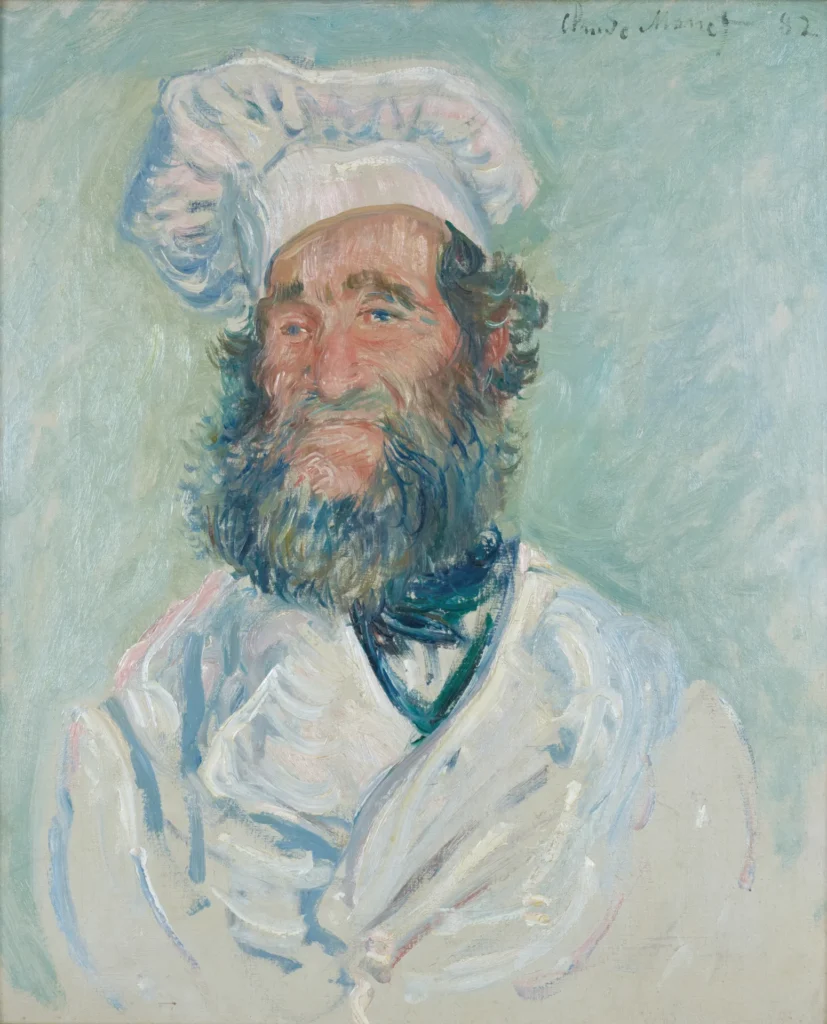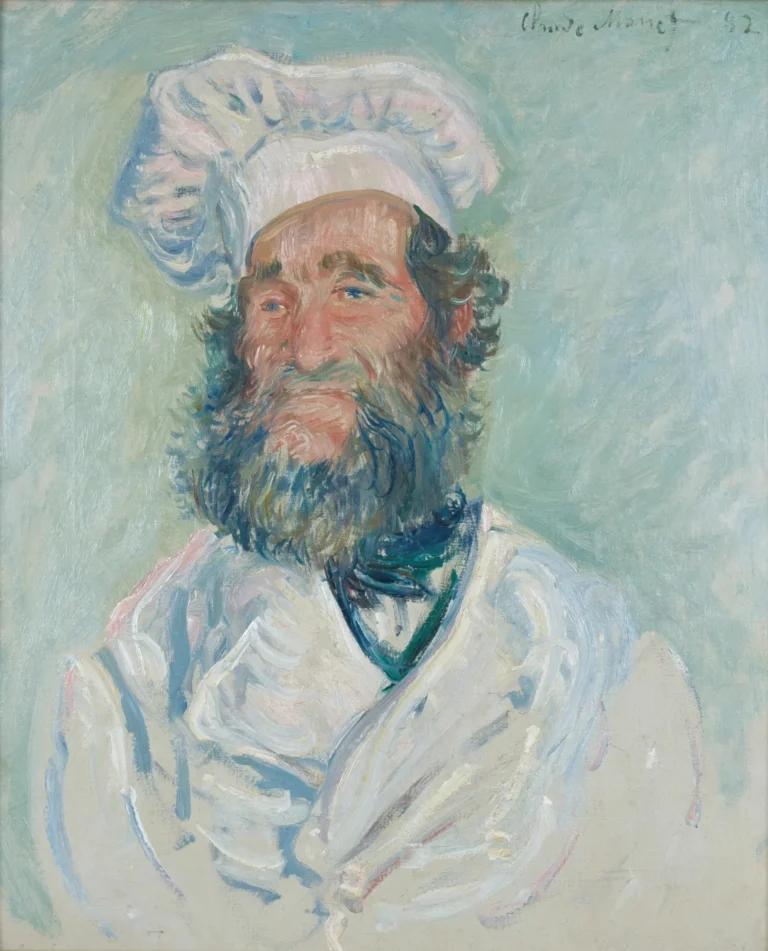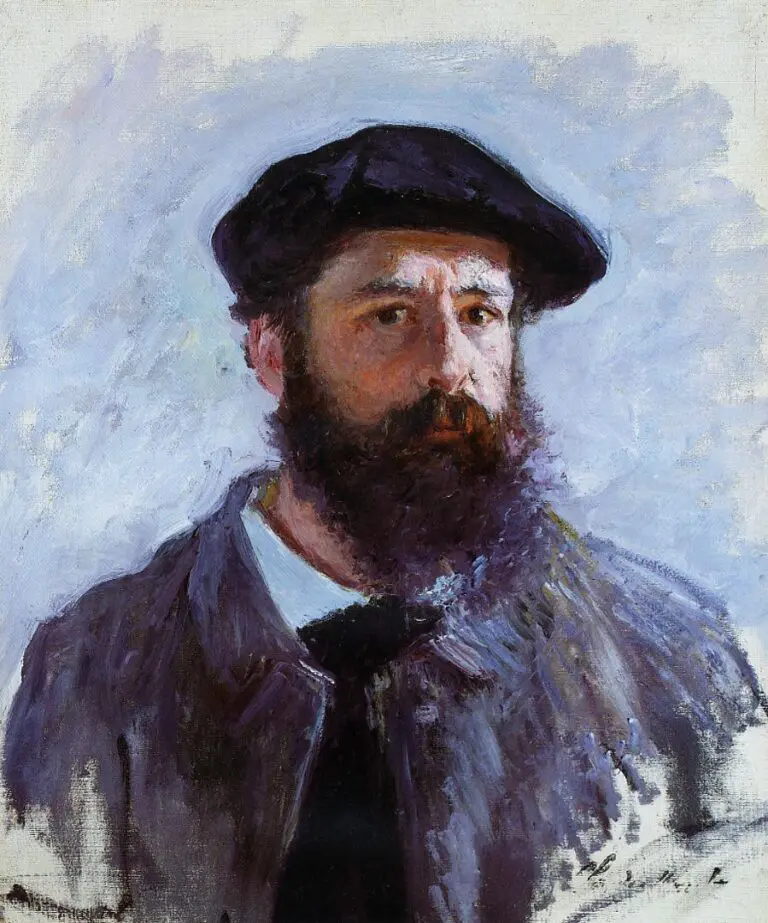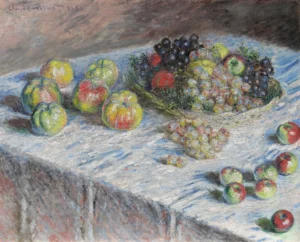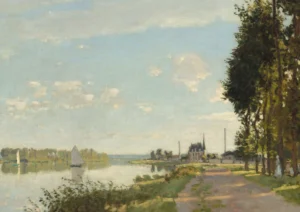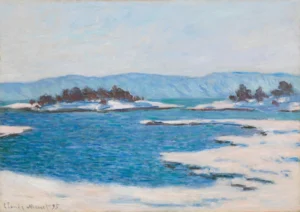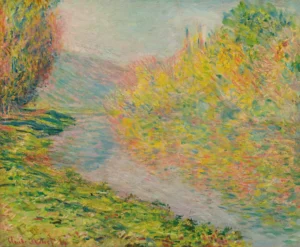Der Koch (Le Père Paul) Monsieur Paul (1882)
Created in 1882, 'Der Koch (Le Père Paul) Monsieur Paul' by Claude Monet is a remarkable portrait that captures Paul Antoine Graff, the chef and proprietor of the restaurant where Monet stayed during his time in Pourville. The artwork is notable for its oval composition and the distinct contrast between Graff's dark beard and white clothing against a light grey background. Through expressive brushwork and a focused color palette, Monet conveys the essence of Graff's character, showcasing a mix of pride and warmth in the portrayal. This painting stands as a testimonial to the hospitality Monet experienced during his visit, reflecting a more personal side of the artist’s work.
Year 1882
About the Artwork
The inspiration for 'Der Koch (Le Père Paul) Monsieur Paul' arose from Claude Monet's stay in Pourville, where he was warmly welcomed by Paul Antoine Graff, a chef and landlord. This portrait serves as a heartfelt tribute to Graff, who not only offered Monet a place to stay, but also became a close acquaintance. Painted two years after the death of Monet's first wife, Camille, this work represents a significant moment in the artist's life, marking a return to portraiture as he sought to reflect the emotional connections he developed with the people around him. Graff's dignified presence is captured in striking detail, embodying the character for which he was well-known among patrons.
Did You Know
This portrait is one of the rare instances of Monet painting portraits after his wife’s passing, marking a poignant transition in his artistic exploration.
Paul Antoine Graff was not only the subject of the painting but also played a significant role in Monet’s life during his stay, serving as both landlord and friend.
While known for landscapes, Monet’s techniques in this portrait showcase his ability to convey character through color and brushstroke, diverging from the typical light play of his more famous works.




